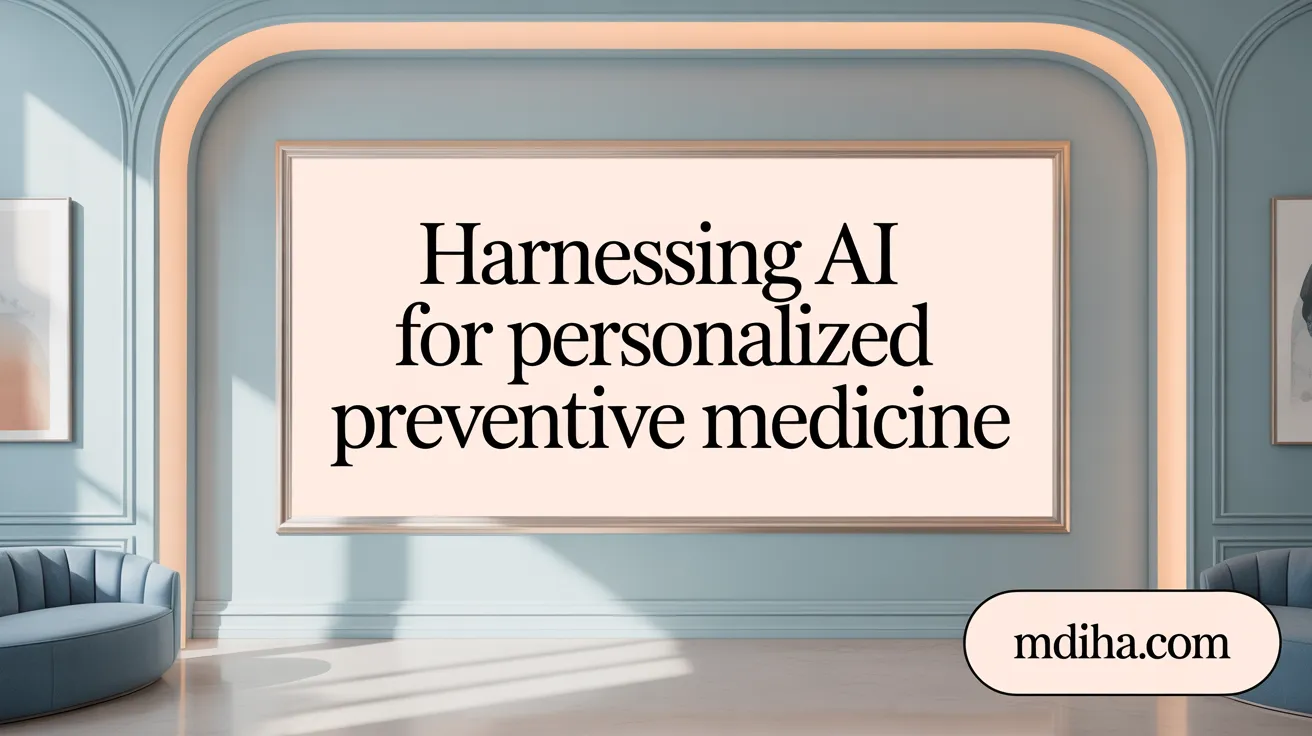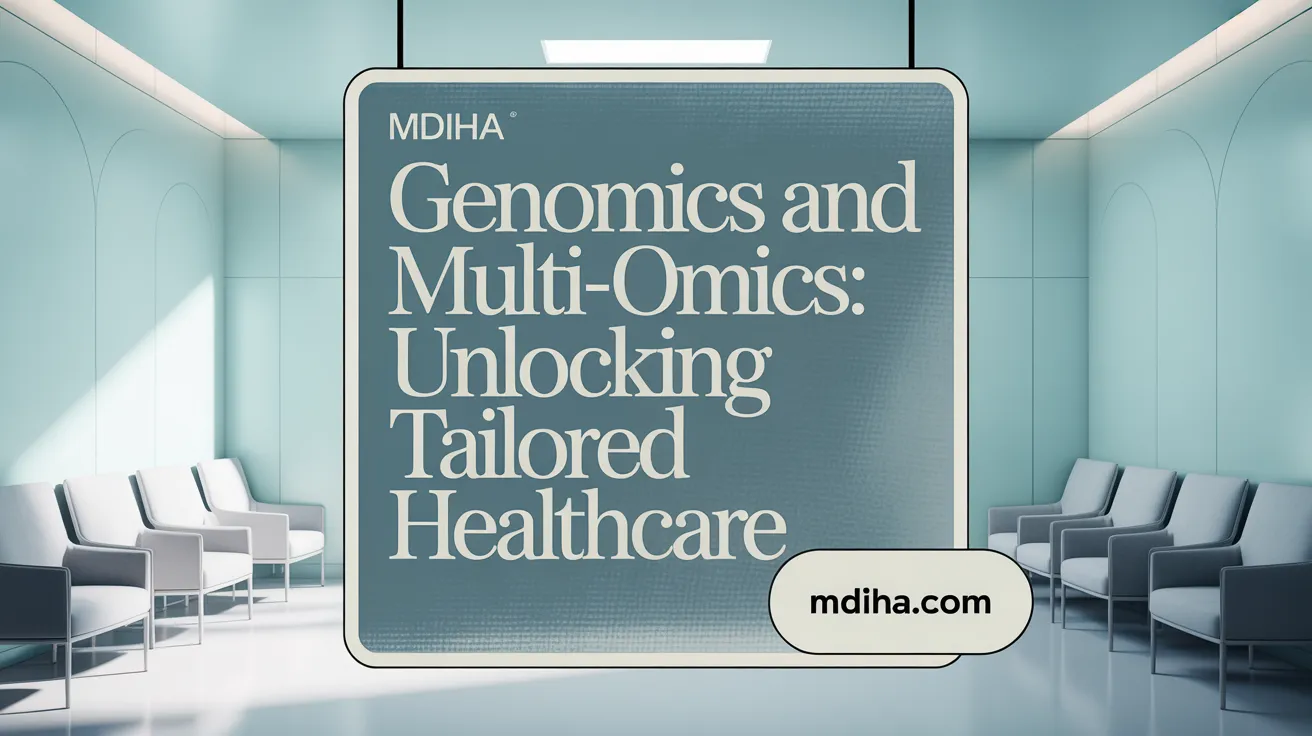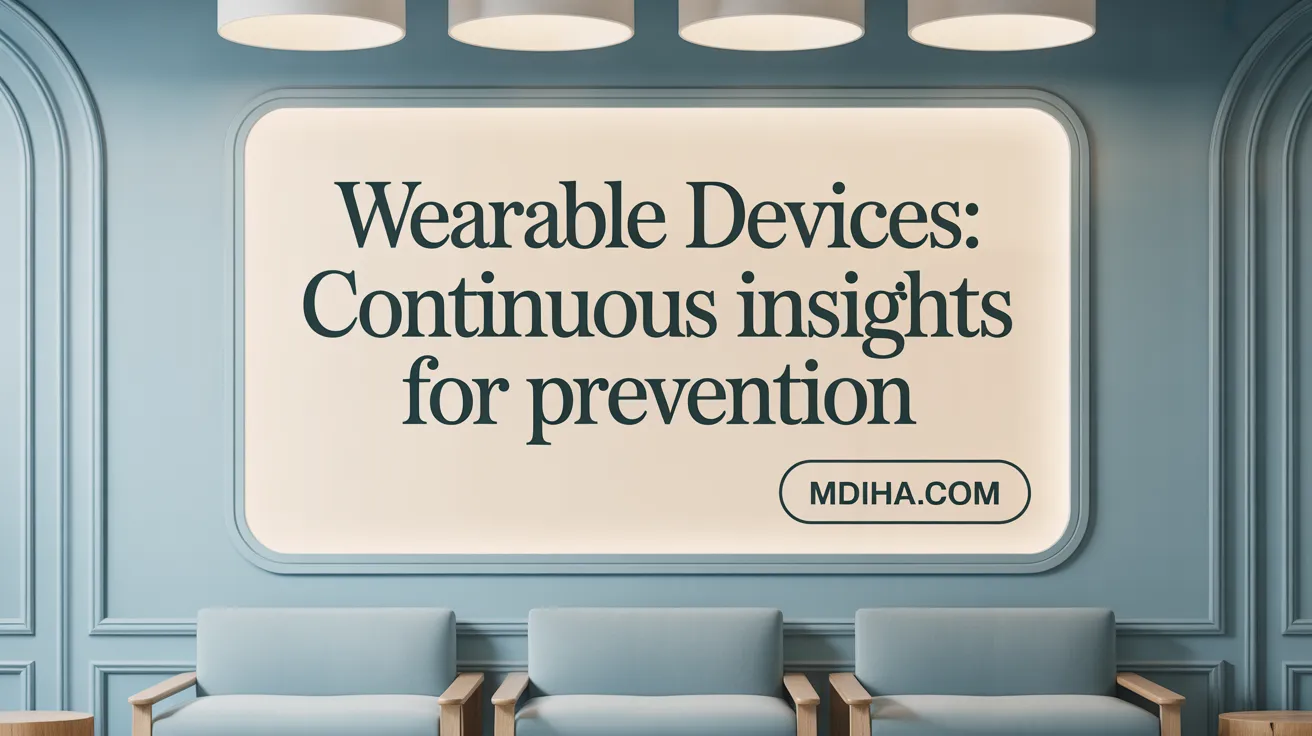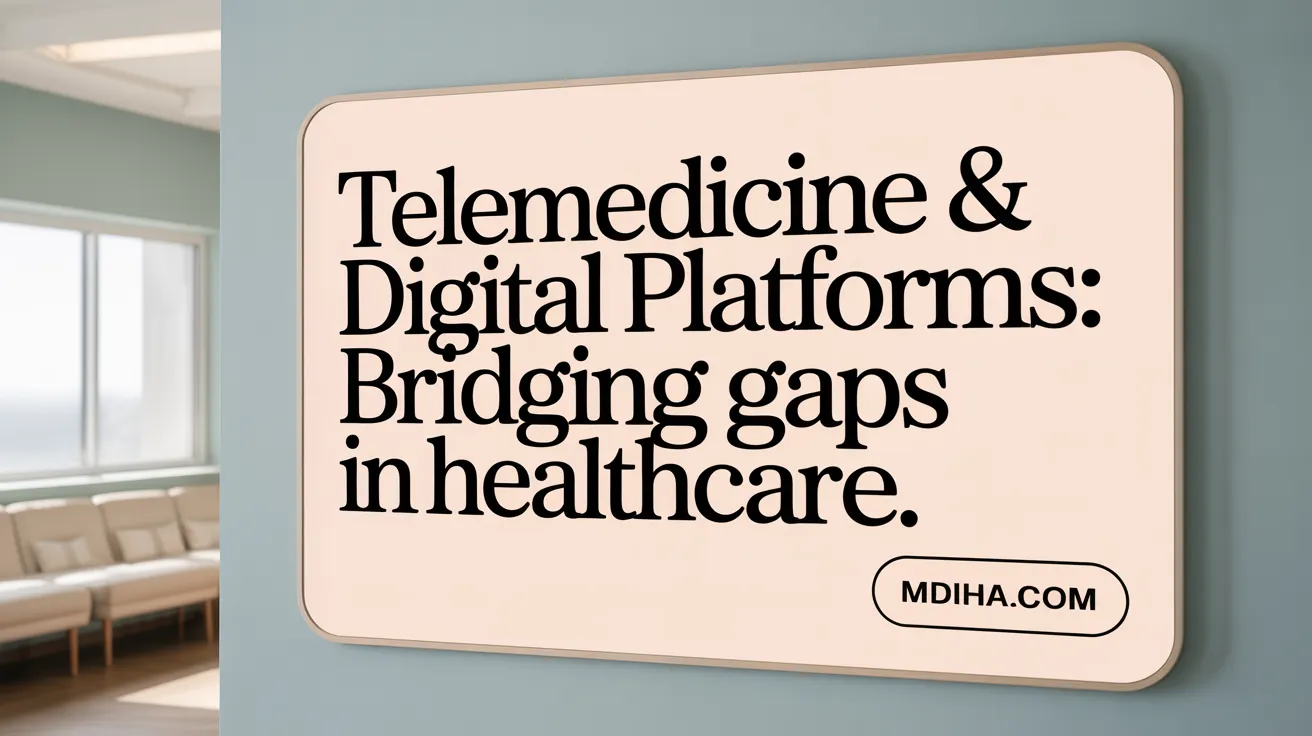The New Frontier in Healthcare: Personalized Preventive Medicine Powered by Technology
As medical science progresses into a new era, the integration of cutting-edge technologies such as artificial intelligence (AI), genomics, wearable devices, and digital health platforms is reshaping the landscape of preventive medicine. This convergence fosters highly personalized, proactive care strategies that transcend traditional one-size-fits-all approaches, aiming to optimize health outcomes by anticipating disease risks and delivering tailored interventions. This article explores how these advanced technologies are spearheading the revolution in personalized preventive healthcare, addressing the scientific, clinical, and ethical dimensions shaping the future of medicine.
Artificial Intelligence: The Backbone of Precision Prevention

How does AI contribute to personalized preventive medicine?
Artificial Intelligence (AI) plays a pivotal role in transforming preventive medicine in the future digital era by leveraging extensive datasets that include genomic sequences, environmental exposures, and lifestyle factors. This enables AI to predict individual disease risks accurately and identify critical biomarker discovery that can inform personalized health interventions.
AI enhances diagnostic precision through advanced techniques such as deep learning, which interpret complex genomic and multi-omic data. By integrating diverse data modalities—including genetic profiles, clinical histories, and social determinants—AI supports individualized treatment planning, allowing for early disease detection and tailored preventive strategies (Precision Medicine and AI).
Roles of AI in healthcare
AI applications span multiple healthcare domains: fraud detection in healthcare, clinical decision support, readmission prediction, outbreak surveillance, and chronic care management. It empowers clinicians with augmented intelligence in medicine for evidence-based decisions and accelerates AI in pharmacogenomics, dosing optimization, and treatment personalization (AI in Healthcare).
Disease risk prediction using AI
Predictive models integrate genomic, clinical, and environmental information to forecast risks for conditions like cardiovascular disease and cancer. AI analyzes large-scale data to identify at-risk populations and enable proactive preventive measures (Risk Prediction in Cardiovascular Disease, AI-driven predictive analytics in oncology).
AI-assisted diagnostics and therapeutics
From early cancer detection to neurological disorder monitoring, AI-driven tools analyze imaging, speech, and gait patterns, as well as wearable devices in health monitoring, to support diagnosis and guide personalized therapies. Radiogenomics exemplifies combining imaging with gene expression to optimize treatment (AI in genomics and radiogenomics.
AI in multi-omics data analysis
Machine learning algorithms process genomic, proteomic, and metabolomic datasets, revealing novel disease mechanisms and therapeutic targets. This integration accelerates biomarker discovery and enables dynamic tailoring of therapeutic regimens over time (Multi-omic Data Integration.
AI challenges like data bias and privacy
Despite its benefits, AI faces challenges such as algorithmic bias in healthcare AI, data privacy concerns, and the need for explainability. Ensuring model fairness and safeguarding patient information through robust regulations and transparent frameworks remain essential for ethical AI deployment in healthcare (Regulatory oversight of AI in medicine).
Genomics and Multi-Omics Integration in Personalized Care

What role does genomics play in personalized preventive healthcare?
Genomics plays a central role in personalized preventive healthcare by identifying genetic susceptibilities to diseases. This genetic insight improves early disease risk prediction and enables precision treatments tailored to an individual’s unique genetic makeup.
Genomic profiling is utilized to stratify patients based on inherited risk factors and tumor molecular fingerprints. This advances therapy selection by informing genotype-guided treatments, such as adjusting drug dosing for medications like warfarin to enhance safety and effectiveness.
Pharmacogenomics uses genomic data to predict drug response and avoid adverse reactions, optimizing medication choices. AI in pharmacogenomics analyze genomic datasets to improve predictions concerning therapy efficacy and patient stratification.
Beyond genomics, multi-omic integration incorporates proteomics, metabolomics, and transcriptomics data, combined with clinical history, lifestyle, and environmental exposures, resulting in a holistic health profile. These comprehensive datasets refine therapy selection and prevention strategies.
However, challenges persist with genomic data usage, including data privacy concerns, potential biases in datasets, complexities in interpreting large multi-omic data, and ensuring clinical workflows incorporate these insights fairly and effectively.
Overall, genomics and multi-omic integration empower personalized preventive care by advancing early detection, optimizing treatment plans, and supporting proactive health management tailored to individual biological and lifestyle factors.
Wearable Technology and Continuous Health Monitoring

How do wearable devices enhance personalized preventive medicine?
Wearable devices such as smartwatches, fitness bands, and continuous glucose monitors have become vital tools in personalized preventive medicine. By providing real-time monitoring of key health metrics—including heart rate variability, blood oxygen saturation, heart rhythm, and glucose levels—these devices enable continuous data collection outside traditional clinical settings.
The information gathered allows for early disease detection with AI by identifying irregularities swiftly. For example, the Stanford Medicine and Apple Watch digital health study, involving over 400,000 participants, demonstrated that Apple Watch could effectively detect irregular heart rhythms, facilitating prompt medical evaluation for conditions like atrial fibrillation.
Wearables empower patients by supporting active health management. Real-time feedback encourages lifestyle adjustments, enhances adherence to treatment plans, and promotes engagement in their own care journeys. Moreover, consistent monitoring helps clinicians track chronic diseases such as diabetes and cardiovascular conditions more effectively, allowing for timely intervention and personalized adjustments to therapy.
In summary, wearable health monitoring devices bridges the gap between patients and providers by enabling continuous health monitoring, early warning of disease states, and facilitating precision care tailored to individual needs.
Telemedicine and Digital Health Platforms: Expanding Access and Personalized Care

Telehealth Services and Virtual Visits
Telehealth encompasses a range of digital health technologies including virtual visits via computers, tablets, and smartphones that allow patients to access healthcare from virtually anywhere. These services include consultations, provider-to-provider communications, and patient portals for messaging, reviewing test results, and scheduling appointments. Telehealth makes healthcare more accessible, especially for those in remote or mobility-limited situations.
Remote Patient Monitoring Technologies
Remote monitoring tools, such as wearable devices in healthcare monitoring and sensors, collect continuous health data like heart rate, glucose levels, and oxygen saturation. Technologies like smartwatches and ECG monitors enable earlier detection of irregularities and facilitate personalized health management without the need for in-person visits, improving chronic disease oversight.
Digital Health Apps for Chronic Disease Management
Mobile applications such as Noom and MySugr support patient self-management of chronic conditions by tracking vital metrics, offering behavioral coaching, and providing personalized recommendations. These apps contribute to better disease control and prevention, empowering patients in their daily health decisions through AI-driven predictive analytics in healthcare.
Impact of COVID-19 on Telemedicine Adoption
The COVID-19 pandemic accelerated telemedicine adoption dramatically, reducing infection risks and maintaining healthcare continuity. During this period, a significant increase in virtual visits and remote monitoring supported patient care while healthcare systems adapted to new delivery models.
Barriers like Digital Literacy and Access
Despite its advantages, telemedicine faces challenges including disparities in digital literacy and access to technology, especially in underserved populations. Data security and privacy concerns in AI healthcare also remain critical, requiring robust regulatory frameworks and user education to enable equitable and safe use.
| Topic | Benefits | Challenges |
|---|---|---|
| Virtual Visits | Increased access, convenience | Technology access, internet availability |
| Remote Monitoring | Early detection, continuous data collection | Device cost, data privacy |
| Health Apps | Personalized management, patient engagement | User literacy, adherence |
| COVID-19 Impact | Rapid telehealth expansion | Infrastructure strain |
| Barriers | Equity in healthcare | Digital literacy, security issues |
What is the impact of telemedicine on personalized preventive healthcare?
Telemedicine bolsters personalized preventive care by facilitating ongoing remote consultations and health monitoring. It enables early detection of potential health issues through continuous data collection and personalized coaching. Access is greatly improved for those in remote or underserved areas, enhancing the quality and timeliness of care. Addressing digital literacy, technological access, and data security are vital to ensure these benefits reach all patients effectively.
Artificial Intelligence in Pharmacogenomics and Drug Optimization
How is AI used to optimize drug therapies in personalized medicine?
Artificial intelligence (AI) plays a pivotal role in personalizing drug therapies by analyzing vast and complex AI in pharmacogenomics datasets. This allows for precise prediction of individual responses to medications, optimizing dosing regimens to enhance treatment effectiveness while minimizing adverse effects.
Machine learning algorithms interpret genetic variants that influence how drugs are metabolized, enabling clinicians to tailor medication plans to each patient's unique genetic profile. For example, AI-guided genotype-based dosing of warfarin significantly reduces risks of bleeding or clotting complications by calculating the most effective and safe dose.
In oncology, AI models predict responses to cancer therapies by analyzing tumor genetics and patient-specific data, facilitating personalized treatment strategies. Tools such as DrugCell use deep learning to forecast drug efficacy, advancing Five Benefits of Precision Medicine.
By integrating these AI-driven insights, pharmacogenomics transforms medication management from a trial-and-error approach to a data-informed, patient-specific practice, improving outcomes and safety.
| Application Area | AI Approach | Impact on Personalized Medicine |
|---|---|---|
| Drug response prediction | Machine learning on genomics data | Accurate prediction of efficacy and adverse effects |
| Medication dosing | Genotype-guided algorithms | Personalized dosing like warfarin optimization |
| Cancer therapy prediction | Deep learning models | Tailored cancer treatment based on tumor profiling |
| Drug discovery | Virtual screening and repositioning | Accelerated identification of therapeutic candidates |
Digital Twin Technology: Simulating Personalized Health
What is the role of digital twin technology in personalized preventive medicine?
Digital twin (DT) technology constructs dynamic, data-driven virtual replicas of patients by integrating genetic, environmental, and lifestyle data. Leveraging advanced tools like artificial intelligence in healthcare, IoT sensors in healthcare monitoring, cloud computing, and machine learning, DTs enable continuous real-time monitoring and predictive analytics.
Concept and architecture of digital twins (DT)
DT systems encompass six layers: physical devices capturing patient data, data sources, communication channels, data processing units, cloud storage, and virtual simulation interfaces. These layers work together to collect, analyze, and visualize complex health information enabling personalized virtual models of an individual’s health status. For more insight, see Digital Twin technology in personalized medicine.
Real-time monitoring and predictive analytics
DTs support personalized preventive care by simulating disease progression and predicting health risks before clinical symptoms emerge. Continuous input from wearable IoT devices feeds real-time physiological data, enabling early detection and timely intervention. This relates closely to advances in digital health technologies in disease prevention.
Applications in surgical planning and drug development
Digital twins facilitate precision in surgical procedures by modeling anatomy and potential outcomes. In drug development, DTs simulate patient responses to therapies, accelerating the design of personalized medications and reducing trial-and-error, as highlighted in AI in healthcare and drug discovery.
Integration with AI, IoT, and cloud computing
Combining AI-driven analytics, IoT-enabled data collection, and scalable cloud platforms, DT technology synthesizes massive datasets for deeper insights. AI models interpret multi-omic and lifestyle data to tailor diagnosis and treatment dynamically. This integration is a key aspect of Precision Medicine and AI and technology integration supporting precision medicine.
Challenges and future outlook
Despite its transformative potential, DT adoption faces obstacles including data security, high implementation costs, interoperability issues, and ethical considerations. Ongoing advancements and expanding market adoption signal significant growth, with DTs poised to revolutionize personalized preventive medicine. For a comprehensive overview of challenges and growth, refer to Digital Twins in healthcare: challenges and future perspectives.
AI-Powered Predictive Analytics for Early Disease Detection and Risk Stratification
How does AI enhance early disease detection and risk stratification?
AI-driven predictive analytics have transformed early disease detection by integrating complex, multi-modal datasets. These include genetic information, clinical records, lifestyle behaviors, and social determinants of health, such as environmental exposures and resource accessibility. By analyzing these diverse inputs, AI models accurately identify individuals at elevated risk for diseases, particularly cardiovascular conditions and various cancers.
Risk prediction models for cardiovascular and cancer diseases
AI is employed in advanced risk prediction models that combine genomic data with traditional clinical metrics and lifestyle factors. For cardiovascular disease, AI synthesizes genetic markers alongside patient history and environmental risks to forecast potential cardiac events. In cancer care, models analyze tumor genomics, imaging, and patient-specific risk factors to enable earlier diagnosis and tailored therapy plans.
Incorporation of multi-modal data including lifestyle and social determinants
Beyond genomics, AI captures crucial non-genetic data such as physical activity patterns from wearable devices in health monitoring, nutritional information, and social variables like housing stability. These social determinants, accounting for approximately 60% of influences on health, provide context for risk stratification and personalized treatment planning.
Use in clinical decision support systems
AI-powered analytics are integrated into clinical decision support tools, enhancing physicians’ abilities to stratify patients by risk and optimize therapeutic strategies. This leads to more informed interventions, timely referrals, and efficient resource utilization.
Examples of early detection aided by AI
Notable applications include AI-assisted detection of atrial fibrillation through wearable health devices like Fitbit and Apple Watch in large-scale studies, as well as predictive analytics identifying relapse risks in cancer patients by analyzing multi-omic data integration. These implementations demonstrate AI's capability to enable proactive, personalized preventive care, improving long-term health outcomes.
Integrating Social and Environmental Determinants in Personalized Prevention

How are social and environmental determinants integrated into personalized preventive care?
Social and environmental factors are crucial components that influence about 60% of overall health outcomes. Unlike traditional models focused mainly on genetics and clinical data, modern personalized preventive care increasingly incorporates non-traditional health data such as housing conditions, access to resources, nutrition, and lifestyle behaviors.
Artificial intelligence (AI) plays a pivotal role by merging this wide array of data to provide a comprehensive health profile. AI-powered models analyze environmental and social determinants alongside genomic and clinical information, enabling nuanced risk stratification and tailored care plans. This integration allows clinicians to understand a patient's complete context, going beyond biology to include social realities that impact health.
For example, considerations like homelessness or limited resource availability are incorporated into AI for personalized treatment planning. By factoring in these conditions, healthcare providers can devise interventions better suited to a patient's living environment and social circumstances, improving preventive strategies and reducing disease risk more effectively.
This holistic approach reflects a shift towards precision medicine that embraces the complexity of individual health in real-world settings, promoting equity and personalized care at its core.
Ethical, Regulatory, and Practical Challenges in AI-Enabled Preventive Medicine
What are the main challenges and considerations when implementing AI in personalized preventive medicine?
Implementing AI in personalized preventive medicine involves several critical challenges that must be carefully addressed.
Data Privacy and Security Concerns: AI systems analyze vast amounts of sensitive health data from genomics, wearables, and electronic health records. Protecting patient privacy and ensuring data security are paramount to maintain trust and comply with regulations like HIPAA and GDPR (Artificial intelligence in healthcare, AI data privacy issues, Ethical AI deployment, Healthcare Data Security and Privacy, Federated Learning.
Algorithmic Bias and Fairness: AI models can inadvertently perpetuate biases if trained on non-representative datasets, affecting diagnostic accuracy and treatment recommendations for underrepresented populations. Ensuring fairness requires diverse data and continuous evaluation (Algorithmic bias in healthcare AI, Data diversity in AI, Bias Mitigation, Challenges in AI adoption, Privacy concerns, Regulatory oversight).
Need for Transparency and Human Oversight: AI decision-making must be interpretable so clinicians can understand and validate recommendations. Maintaining human oversight prevents overreliance on automated systems and supports ethical medical practice (AI transparency, Human oversight in AI healthcare, Ethical considerations, Explainability in AI Models, Regulatory issues.
Healthcare Workforce Training and Infrastructure Needs: Effective AI integration requires training healthcare professionals in AI tools and data interpretation. Infrastructure investments must support data integration, interoperable systems, and AI deployment (Healthcare workforce AI training, Infrastructure investment, Cloud infrastructure for AI medicine, Improving patient care with technology).
Regulatory Frameworks and Policies: Developing comprehensive regulations is vital to govern AI safety, efficacy, data governance, and accountability. Authorities like the FDA and initiatives like the Coalition for Health AI (CHAI) work to create trustworthy AI usage standards (Regulatory frameworks for AI, Coalition for Health AI, FDA and EMA AI regulatory frameworks.
Addressing these challenges through multidisciplinary collaboration ensures AI-driven preventive medicine advances responsibly and equitably, paving the way for safer, more personalized healthcare.
Advancements in Diagnostic Technologies: AI and Digital Biomarkers
How are diagnostic technologies evolving to support personalized preventive medicine?
Diagnostic technologies are rapidly evolving through integration with artificial intelligence in diagnostics, enabling more personalized and preventive healthcare approaches. AI-powered tools are now capable of extracting and analyzing AI-powered digital biomarkers—health indicators collected continuously from wearable devices in health monitoring and home monitoring technologies. These biomarkers allow for real-time tracking of physiological changes, facilitating early disease detection with AI and ongoing health management beyond traditional clinical settings.
AI-enhanced imaging technologies are also transforming diagnostics. Combining radiology with genomic data, known as radiogenomics and AI, enables more precise disease subtyping and personalized treatment planning by linking imaging features to gene expression modeling. Additionally, liquid biopsy technology powered by AI analyze circulating tumor DNA from blood samples, offering a minimally invasive method for early cancer diagnosis and monitoring treatment response.
Point-of-care testing with AI systems are advancing through AI integration and digital health innovations including telemedicine and wearable technology, bringing rapid, accurate diagnostics directly to patients in diverse settings. These portable diagnostic tools enable timely medical decisions, especially crucial in resource-limited areas or for patients requiring frequent monitoring.
Together, these AI-supported diagnostic advances improve the accuracy, accessibility, and personalization of preventive medicine by shifting focus towards early intervention and continuous health assessment.
Digital Health Tools Empowering Patients in Preventive Care
In what ways do digital health tools support patient empowerment in preventive care?
Digital health technologies provide patients with unprecedented tools to take an active role in their own health management. Through self-monitoring applications, individuals can track vital health metrics such as weight, blood sugar, and physical activity in real time. These platforms also deliver personalized coaching, helping users adapt their behaviors to reduce disease risks.
Behavioral interventions delivered via digital platforms facilitate consistent engagement by offering reminders, educational content, and motivational nudges tailored to each patient's unique needs. Examples of such tools include Noom, a weight management app, and MySugr, which assists diabetes patients in monitoring glucose levels and managing their condition effectively.
These digital tools significantly enhance patient engagement by making prevention more interactive and accessible. They empower patients to identify early warning signs and foster lifestyle changes that improve long-term health outcomes. Consequently, preventive care transitions from a reactive to a proactive, participatory process where patients become key partners in maintaining their wellness. Supported by advancements in digital health technologies and wearable health technology, these tools integrate AI-driven predictive analytics in medicine to facilitate personalized recommendations and real-time monitoring.
The Evolving Physician-Patient Relationship in the Age of AI and Digital Medicine
How is the doctor-patient relationship changing with AI and digital health integration?
The traditional doctor-patient relationship is shifting towards a hybrid model that blends human empathy with advanced artificial intelligence in healthcare technologies. AI enhances diagnostic accuracy and treatment personalization but serves as an aid rather than a replacement for clinicians' judgment.
This partnership allows clinicians to harness AI for real-time data analysis, predictive insights, and personalized care planning while maintaining the essential elements of trust and communication that underpin effective healthcare. Patients benefit from technology-enabled continuous monitoring and personalized recommendations, yet rely on the physician's oversight to interpret findings and guide decisions.
Training healthcare providers to effectively integrate AI is critical. This includes cultivating digital literacy, understanding AI capabilities and limits, and emphasizing ethical considerations such as privacy and bias mitigation. Medical education is evolving to prepare providers to collaborate with AI tools, ensuring patient engagement and personalized care remain central.
Through this synthesis of technology with compassionate care, the doctor-patient relationship is enhanced rather than diminished, facilitating more proactive, precise, and patient-centered healthcare delivery.
Embracing the Future of Personalized Preventive Medicine
The integration of artificial intelligence, genomics, wearable technology, and digital health platforms is ushering in a transformative era in personalized preventive medicine. By harnessing comprehensive multi-dimensional data and advanced analytics, healthcare providers can deliver precision interventions tailored to individual genetic makeups, lifestyles, and environments. This approach not only enhances early disease detection and treatment optimization but also empowers patients to actively participate in their health journey. Despite challenges related to data privacy, ethical considerations, and equitable access, ongoing advancements in technology, regulatory frameworks, and interdisciplinary collaboration are paving the way for a more proactive, efficient, and patient-centered healthcare paradigm. Embracing these innovations holds the promise of significantly improving long-term health outcomes and quality of life for diverse populations worldwide.
